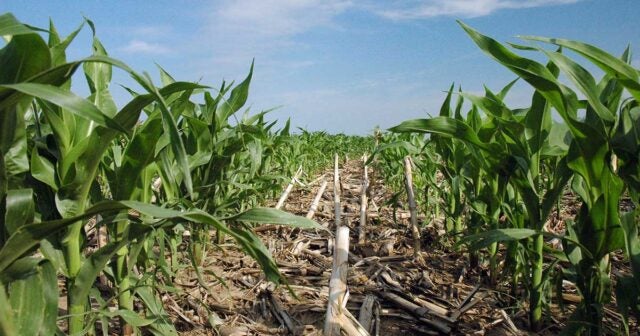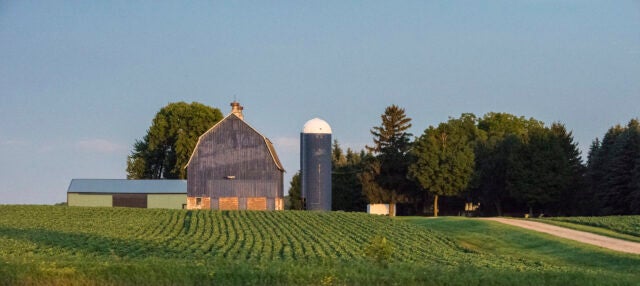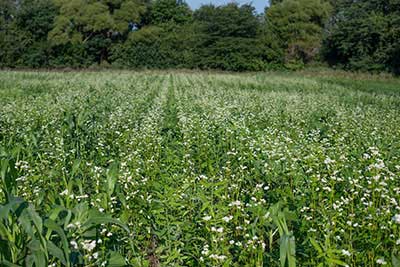- Resources
- Understanding the costs and returns of cover crops: What farmers need to know
Resources
Understanding the costs and returns of cover crops: What farmers need to know
Published: September 9, 2024 by Mai Lan Hoang, EDF
The summer of 2024 has brought unexpected extreme weather events, including prolonged heatwaves across the U.S. Southwest and Northeast and widespread flooding in the Midwest. As farmers grapple with these severe weather conditions, it’s more crucial than ever to support them in implementing climate-smart agriculture practices that can bolster the resilience of their operations.
Among these practices, planting cover crops stands out for its potential to enhance soil health and water quality while providing additional climate adaptation benefits. However, many farmers still have questions about the economic impacts of cover crops on their operations.
A recent report published by Environmental Defense Fund and partners provides valuable insights about the financial implications of cover crops with detailed financial data gathered from 129 Minnesota farms and 12 Wisconsin farms in 2023. Here’s what farmers should know as they consider planting cover crops this fall:
1. The costs and returns of cover crops depend on their end use.
Cover crops can be implemented with a few end uses in mind. Farmers can plant cover crops to prevent erosion and improve soil health, in which case they will terminate the cover crop in the spring or let it die off in the winter. Alternatively, farmers may intend to harvest a rye crop in the spring to use as silage feed.
Overall, total direct expenses for implementing cover crops — including seed, planting and terminating cost — varied widely, ranging from $14 to $285 per acre. The average cost was $60, with a median of $48. The primary cost contributors were seeds, machinery repairs and fuel.
The costs and returns of the cover crop can differ significantly depending on the farmers’ end use. For example, the average expenses associated with planting a rye silage cover crop was $129 per acre in 2023, while the average expenses associated with a cover crop mix was $49 per acre. Farmers using or selling their rye silage cover crop received on average $134 per acre in gross return, whereas farmers using a cover crop mix for soil health benefits only received $9 per acre in gross return. Planting cover crops solely for soil health purposes costs less, but also results in less revenue.
2. Cost-share payments can reduce cover crop costs.
The total cost of implementing cover crops can be daunting for farmers, but U.S. Department of Agriculture conservation programs, state programs and food company cost-share programs can help lower the implementation cost.
In our cover crop cohort, 44% of farmers received cost-share payments to cover a portion of their cover crop costs. For those farmers, cost-share payments offset 43% of their cover crop expenses. Overall, 10% of all cover crop expenses in our cohort were offset by cost-share payments.
To reduce cover crop expenses, farmers should connect with their local USDA office, soil and water conservation district, state department of agriculture representative, co-op or local grain elevator to see what cost-share programs they offer.
3. There are opportunities to manage financial risks when adopting cover crops.
For all regions covered in our cohort, commodity crops grown after cover crops yielded a lower average net return compared to the same commodity grown without a cover crop, after accounting for labor and management costs. However, there are ways producers can manage financial risks to lower the costs of cover crops on their operations.
Our research found that farmers with more experience in growing cover crops had lower median direct expenses compared to those with less experience. To manage the financial risks associated with adopting cover crops for the first time, farmers should consider starting on a small scale. Testing cover crop implementation on a few fields can help farmers gain experience, understand the benefits and challenges of this practice, and better manage its financial impacts.
As farmers evaluate whether to plant cover crops in the coming season, it’s essential to carefully weigh the costs and benefits associated with cover crops and their impact on the commodity crops. While government and private sector cost-share funds can help mitigate some expenses, they only cover a portion of the total costs. Effective management of cover crop enterprises is crucial to achieving positive financial returns.
By understanding these financial dynamics, farmers can better navigate the challenges of implementing cover crops and benefit from improved soil health in the long term.
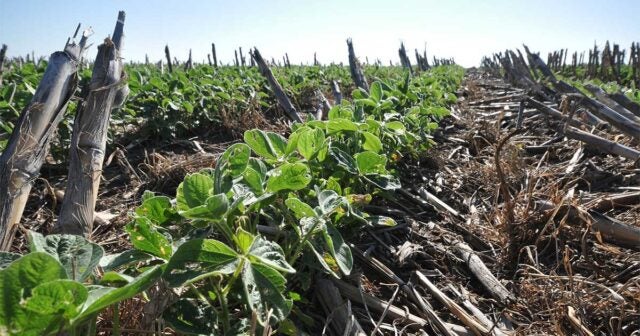
Our Experts
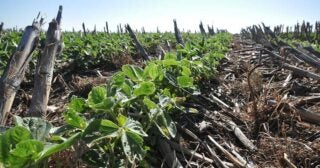
-
Financial Solutions for Agricultural ResilienceLearn More


